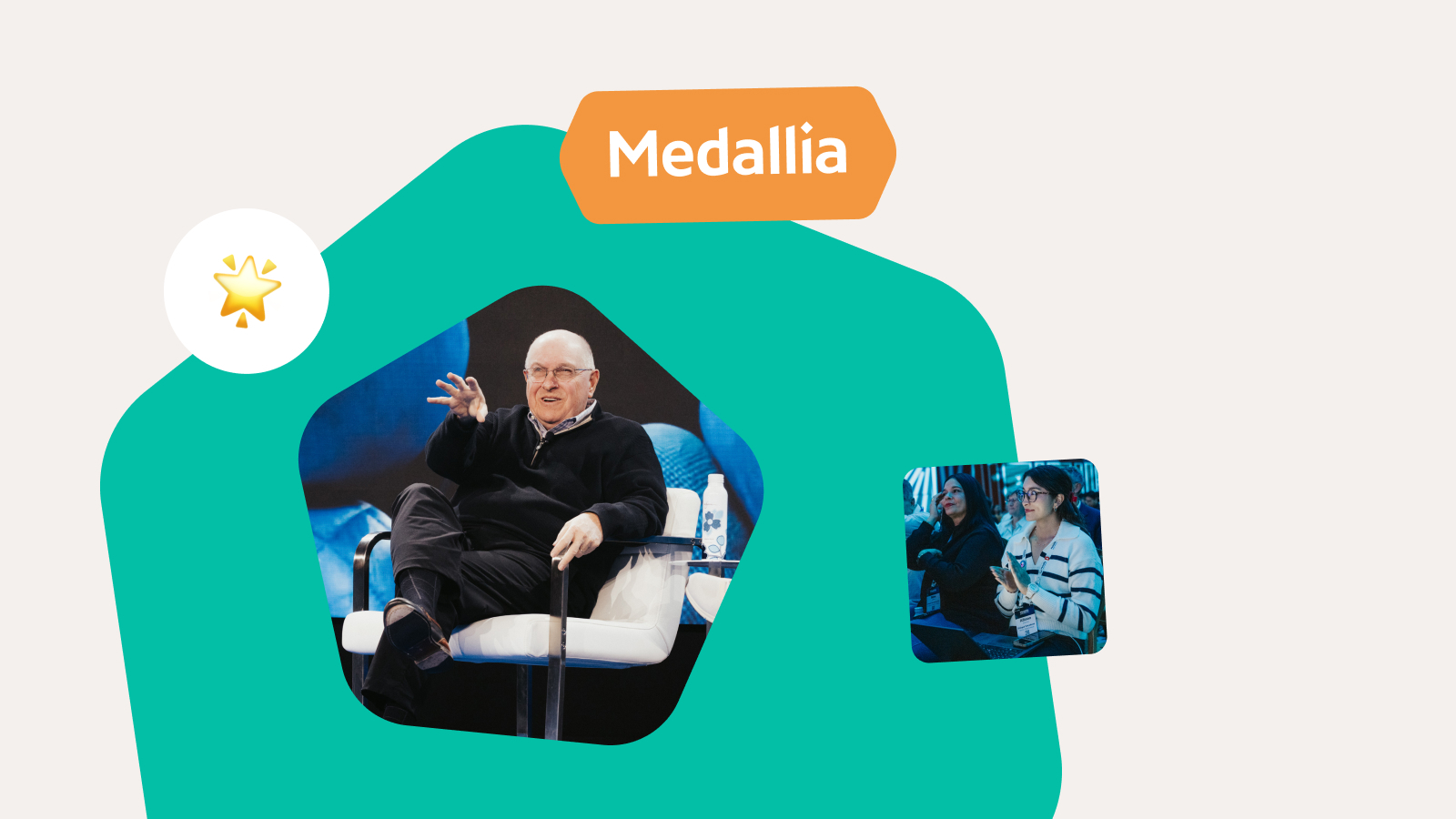CX Day: Industry Experts Share Their Best Insights
October 7, 2024
Customer Experience
Discover strategies to improve customer journeys and drive loyalty with highlights from Medallia’s in-depth panel discussion.
I recently had the pleasure of hosting Medallia’s virtual event to celebrate CX Day. This year’s theme was all about deepening our understanding of customer experience through insights and actionable strategies.
Three impressive industry leaders joined me to share their unique perspectives on this timely topic: Gillian Howie, Vice President of Customer Experience at Western Financial Group, an insurance broker that operates coast to coast; Dr. Mel Salvador, Director of Customer Experience at Trulieve, an industry-leading vertically integrated cannabis company; and Geoffrey Ryskamp, Vice President and Executive Advisor for Hospitality and Travel at Medallia, who has held management and operational roles with Hilton Worldwide, Marriott International, and more.
During the panel, we discussed how silos can create barriers that frustrate customers, how using customer feedback to pinpoint these problem areas can help teams improve the customer journey, and the need for alignment of internal teams for consistent, seamless customer experiences. The panelists also provided real-world lessons in delivering the kinds of customer experiences that build lasting customer loyalty.
Let’s explore some key takeaways from the event.*
Q: How can you use your CX insights to help identify some of the biggest points of friction in the customer journey?
Geoff Ryskamp: Customer experience is the new battleground for businesses, especially in the travel and hospitality sector, where others’ experiences directly influence consumer choice. To win this battle, we need to identify and eliminate friction points in the customer journey. We see a common friction point at the handoff between marketing and operations. Picture this: Marketing crafts a compelling offer that attracts a customer, but when that customer reaches out, the operations team is in the dark. This disconnect can turn a potentially positive experience into a frustrating one. Observing behavior and leveraging feedback and other signals will pinpoint these friction points, and more importantly, take action on those impacting the customer journey across teams.
Greg Kihlström: It’s not only data or departmental silos companies need to contend with. There may be goal or incentive silos as well. Part of the solution to this is a better use of CX insights.
GR: I agree and it’s not enough to simply identify these friction points. We need to break down the silos that exist within our organizations. Customers don’t care about internal departments; they expect a seamless experience from start to finish.
When customers run into multiple hurdles trying to fix a simple issue, they get frustrated and feel undervalued which ultimately erodes their trust and loyalty, no matter which department is to blame. Successful companies put the customer first, breaking down internal barriers and establishing shared goals. When teams focus on customers’ needs, they’re more likely to collaborate and find solutions, even if it means stepping outside their usual roles.
Not all friction is negative. Sometimes, a team member goes above and beyond in a challenging situation, creating a moment of delight. The critical task is to identify and make these positive outliers the new organizational standard.
Gillian Howie: A quote that sticks with me is, “It may not be your fault, but it’s your problem.” It doesn’t matter who caused the issue. Finding a solution is what really matters. To build customer loyalty, we need to solve the problem, even when we’re not to blame.
Q: If everything is a priority, then nothing is a priority. How do you focus on the right things when there is always “one more thing” to do?
Dr. Mel Salvador: The best way to capture the customer’s voice and figure out the real priorities is through data. We’ve customized Medallia so each department has unique access to the data, dashboards, and reports they need. Our focus is on actionable insights and spotting trends instead of relying on individual opinions. While we can’t please everyone, this data helps us stay aligned with the company’s overall KPIs.
GH: It’s important to help businesses understand the “why” behind it all when we prioritize action items. Often, when we look to implement a new process, we’re sharing a piece of the end-to-end journey. We should take the time to explain how this piece folds into the bigger picture to create the journey that we want for our customers.
GR: In CX, it’s easy to get overwhelmed by a constant stream of data, feedback and organizational requests. This is why it’s so critical to have a feedback loop between the insights and operations teams that deal with customers daily. When we use this loop, we take the right actions and use feedback to drive prioritized action. Open communication and collaboration are crucial. When we understand the cost of getting it wrong — lost customers, damaged reputation, these insights become even more valuable to the business to drive meaningful improvements.
Q: What are some of the biggest barriers to creating effective feedback loops so that continuous improvement happens?
GH: One big barrier is getting organizational buy-in when it comes to the importance of closed-loop feedback. We have to respond to customer feedback. Ignoring it is worse than not asking in the first place. We need to illustrate what happens when we ignore the customer’s opinion so everyone in the organization understands why the feedback loop truly matters.
MS: We’re all talking about the same key things, even though we’re in different industries: understanding what customers are saying, responding to their feedback, and getting internal buy-in. A major barrier is the fast-paced environments we’re all in. Priorities can change quickly, so we need to stay focused and clear obstacles. Getting that buy-in is crucial for building customer loyalty and using the tools we have to keep it.
The result? Greater customer loyalty
MS: Sometimes, customers don’t know what they want or what they don’t. They just know their overall perception of the experience. In turn, we have to be innovative in terms of making the experience better in the long run, sometimes making a few assumptions along the way.
GH: Customer needs are constantly changing. What worked five years ago might not work today, so we have to be quick to adapt. The key is to try new things and let customers show us what works. Stay flexible and ready to pivot, but make sure any changes don’t disrupt the overall experience.
GK: It requires collaboration, access to the right insights, prioritizing the right actions for the right audiences, and a constant focus on improvement and innovation.
*This conversation has been edited for length and clarity.
For even more insights from these CX experts, check out the full recording of our virtual event.












